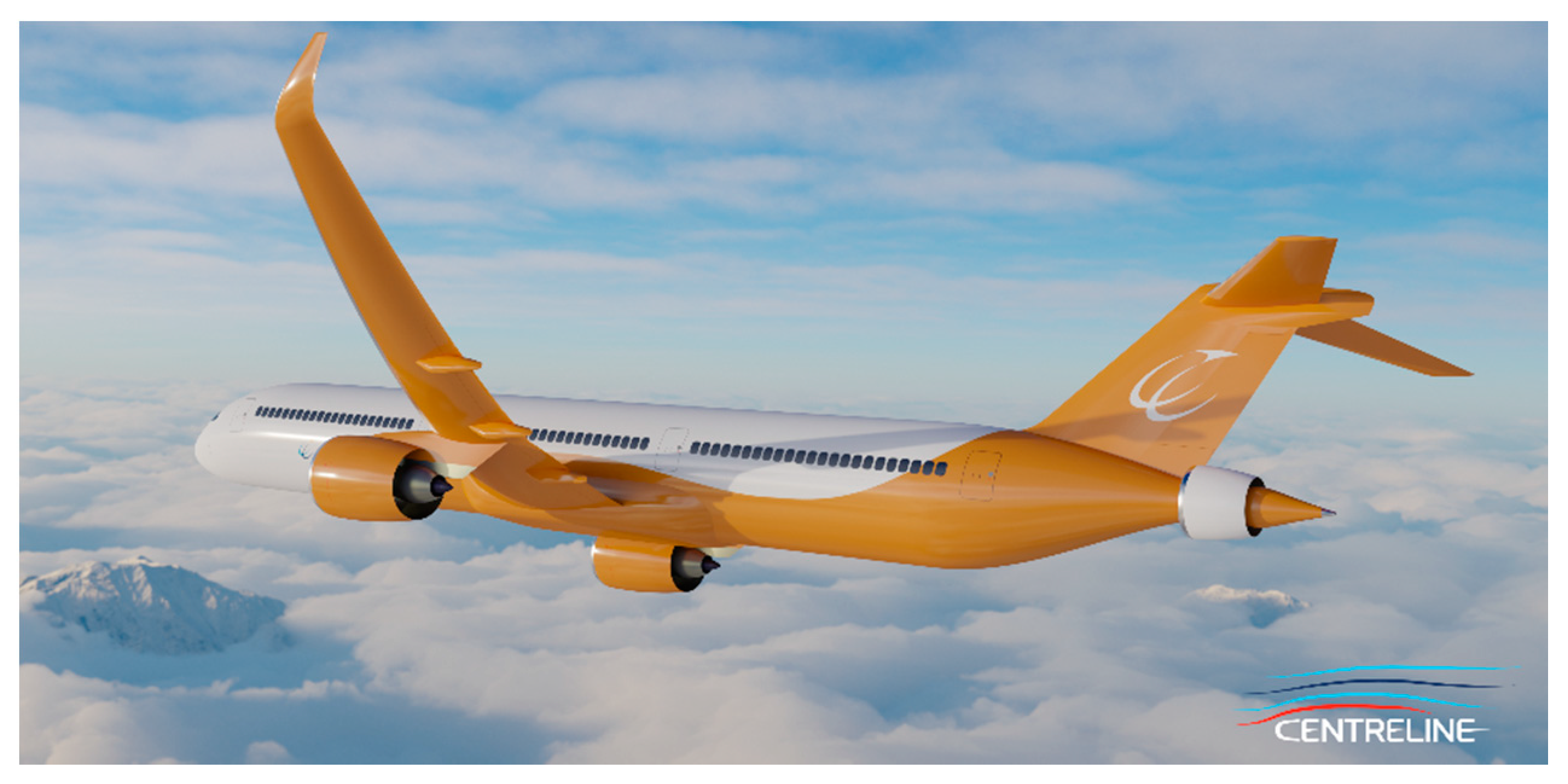
Drag-reducing boundary-layer ingestion (BLI) could cut the fuel burn of a future twin-aisle airliner by more than 3% compared to an equivalent-technology conventional aircraft, a European research project has concluded.
The European Union-funded Centreline project, led by German design house Bauhaus Luftfahrt, completed a proof-of-concept study of the propulsion fuselage concept (PFC)—a design in which a tail-mounted fan ingests the fuselage boundary-layer airflow and reenergizes the wake to reduce drag.
Centerline developed the design for an Airbus A330-size airliner with a turbo-electric-powered fuselage fan for BLI. Powered by electricity from generators mounted on a pair of underwing geared turbofans, the annular fan encircles the fuselage just aft of the vertical tail.
NASA previously studied a single-aisle turbo-electric aircraft with aft BLI propulsion, called STARC-ABL, and concluded the block fuel-burn reduction was 2.6% for a 900-nm mission, increasing to 3.4% for a 3,500-nm segment. This is in line with the Centreline results for a 6,500-nm-range twin-aisle.
The boundary layer over an aircraft contains kinetic energy that is induced by skin friction as air flows over the surface. This generates viscous or skin-friction drag which, in a widebody, can account for 60-70% of total drag, almost of it from the fuselage, the study notes.
In a conventional aircraft that kinetic energy is lost in the wake. With BLI, the wake kinetic-energy loss associated with the ingested share of the boundary layer is reduced, a mechanism known as wake-filling. At the same time, ingesting the moving air over the fuselage reduces the excess momentum in the jet from the tail fan, reducing the required thrust.
Centreline compared the PFC design with a conventional reference aircraft with an equivalent level of technology for an airliner entering service in 2035. The study concluded the turbo-electric fuselage fan would increase empty weight by 3.8% but reduce mission fuel burn by 2.8% for the most pessimistic assumptions and 3.7% for the most optimistic.
Nitrogen-oxide emission reductions for the PFC were estimated at 64% relative to year-2000 technology levels. Noise levels were found to be similar for the PFC and the reference aircraft at 12 EPNdB lower than 2000 levels. Cash operating costs for the PFC were projected to be lower than for the reference aircraft once the fuel price exceeded $1.50 per gallon.
The Centreline project included low-speed wind-tunnel tests of the overall aircraft and rig tests of the BLI fan. As the next steps to mature the technology, the team has recommended either tests in the European Transonic Windtunnel or use of a “flying wind tunnel” similar to Europe’s Airbus A340-based BLADE laminar-flow testbed. “The testbed could be fitted with wingtip devices representing a fuselage with and without a fan in different integration levels,” the report suggests.

Comments